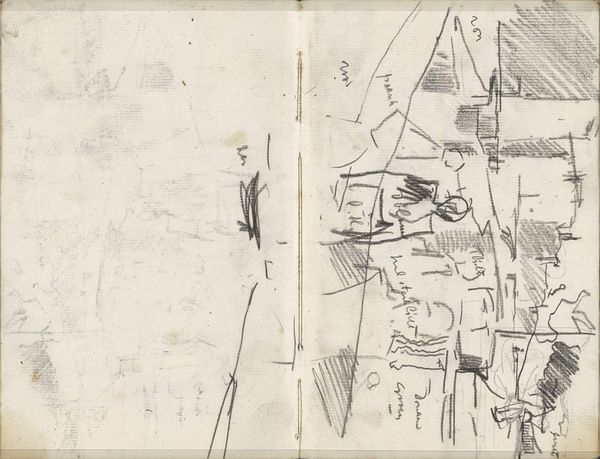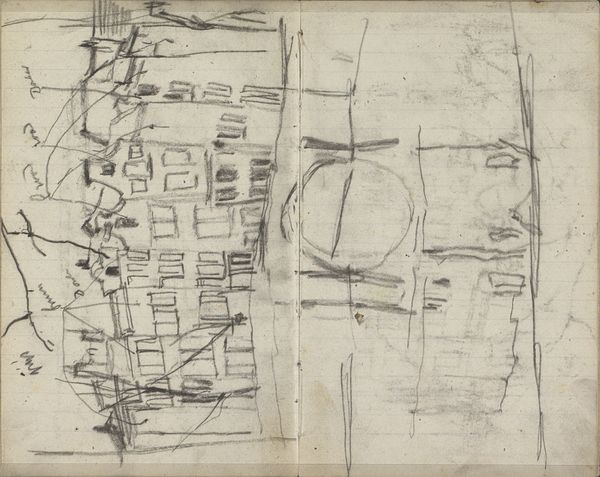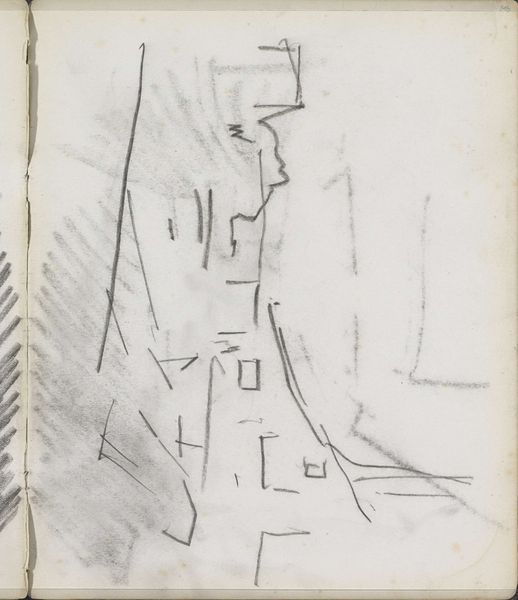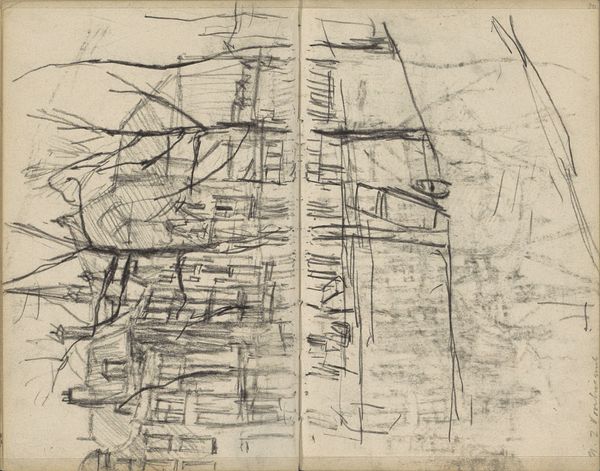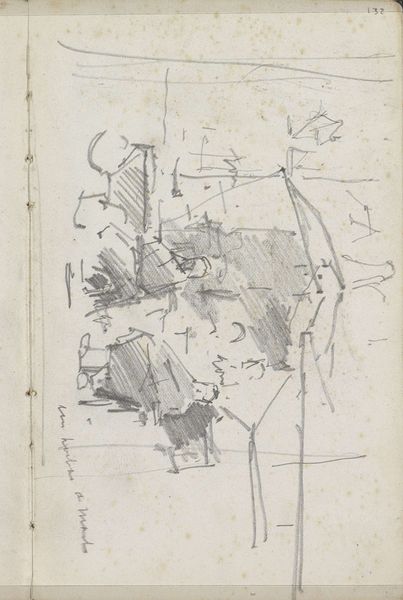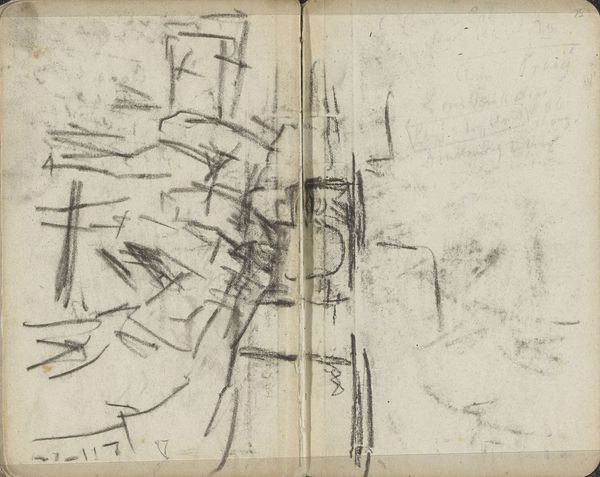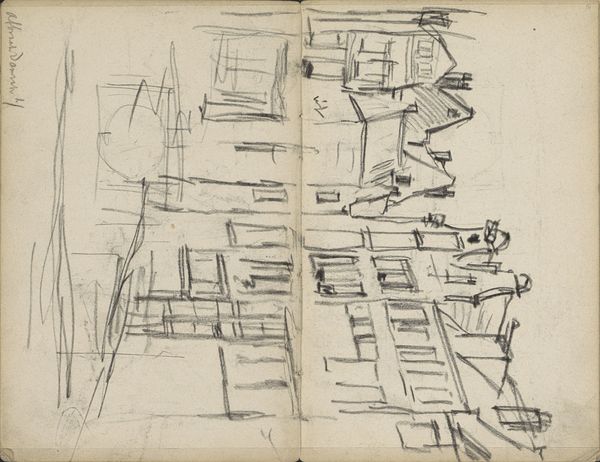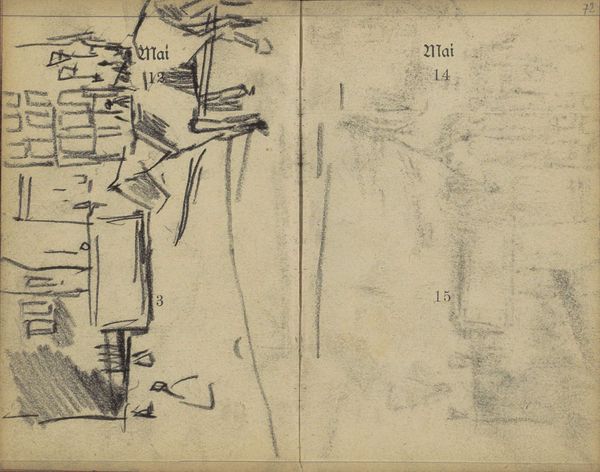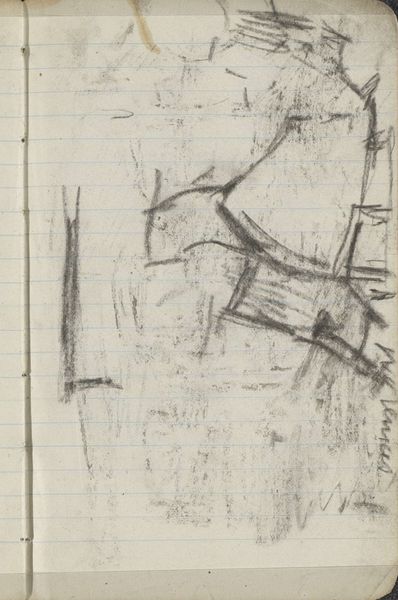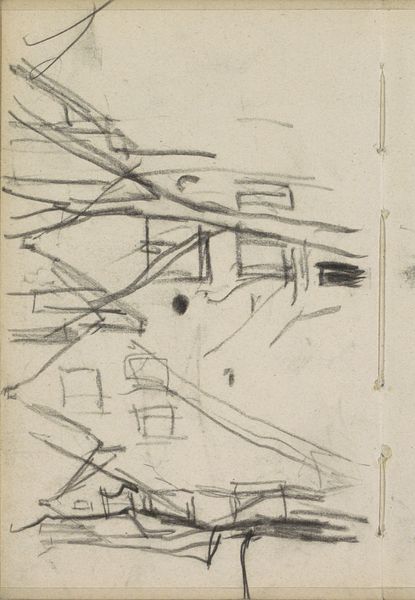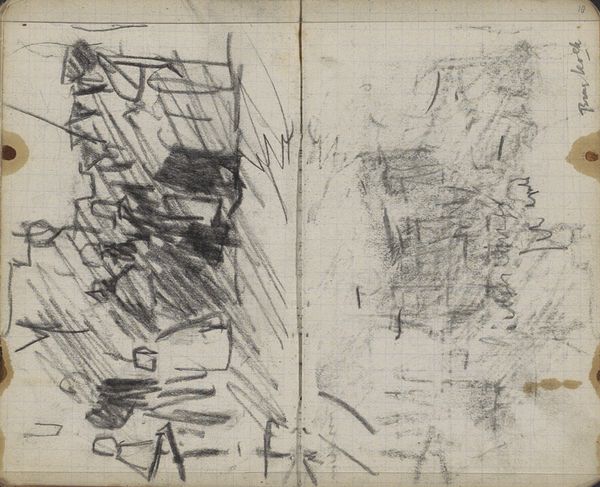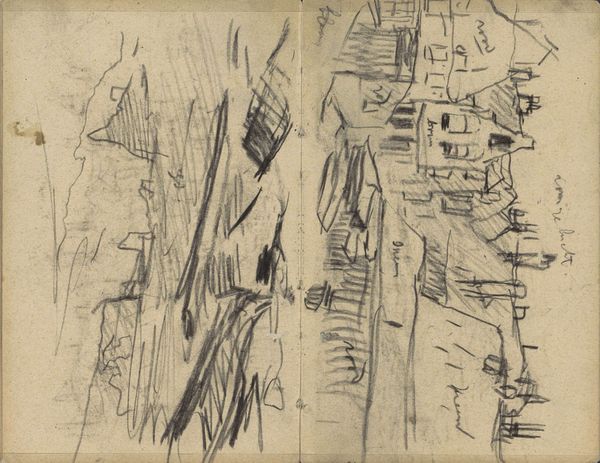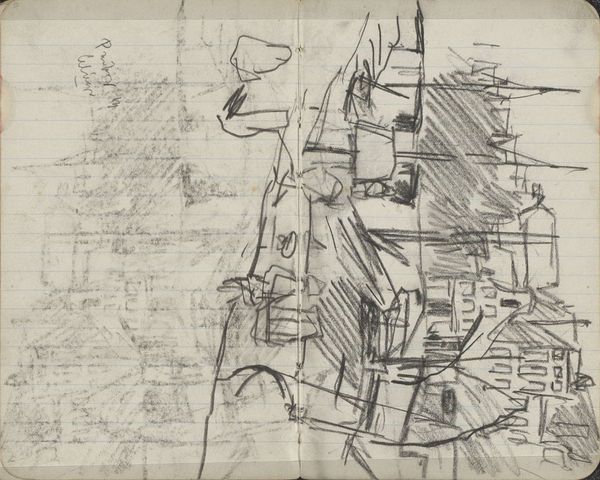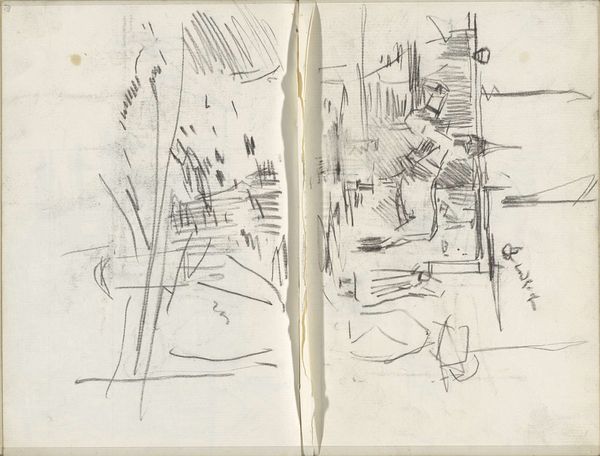
Copyright: Rijks Museum: Open Domain
Editor: We’re looking at “Gezicht in Amsterdam met figuren,” a pencil and pen sketch by George Hendrik Breitner, made sometime between 1895 and 1898. It feels… unfinished, like a fleeting glimpse of a city. What do you see in this work beyond the surface? Curator: I see a resistance against the romantic idealization of urban life so common at the time. Breitner's sketchiness, his refusal to complete the image, reflects the alienating effects of rapid industrialization and urbanization on the individual. Do you notice how the figures are barely defined, almost ghostly? Editor: Yes, they’re just suggested. Why would he do that? Curator: This erasure of the individual aligns with contemporary anxieties about the loss of identity in the modern metropolis. Think about the rise of sociological theories that grappled with the anomie and alienation experienced by urban dwellers. Breitner is visually expressing those very concerns. This sketch also embodies the burgeoning flâneur culture - how might the experience of strolling through the city, casually sketching what one sees, become a form of resistance? Editor: So, it’s not just a sketch, it's a commentary? Curator: Precisely! It is through his stylistic choices, like the rough, unfinished quality and the emphasis on the chaotic cityscape over the people, that Breitner implicitly critiques the social conditions of his time. How does the perspective – that of being on the street – change the way we perceive the subject? Editor: I hadn't considered that. Seeing it as a deliberate statement, rather than just a quick sketch, makes a huge difference. Curator: Indeed, looking at art through this lens reveals its power as a form of social critique and engagement, reflecting back at us the anxieties and struggles of its time. Editor: I will never look at a simple street scene the same way. Thank you!
Comments
No comments
Be the first to comment and join the conversation on the ultimate creative platform.
